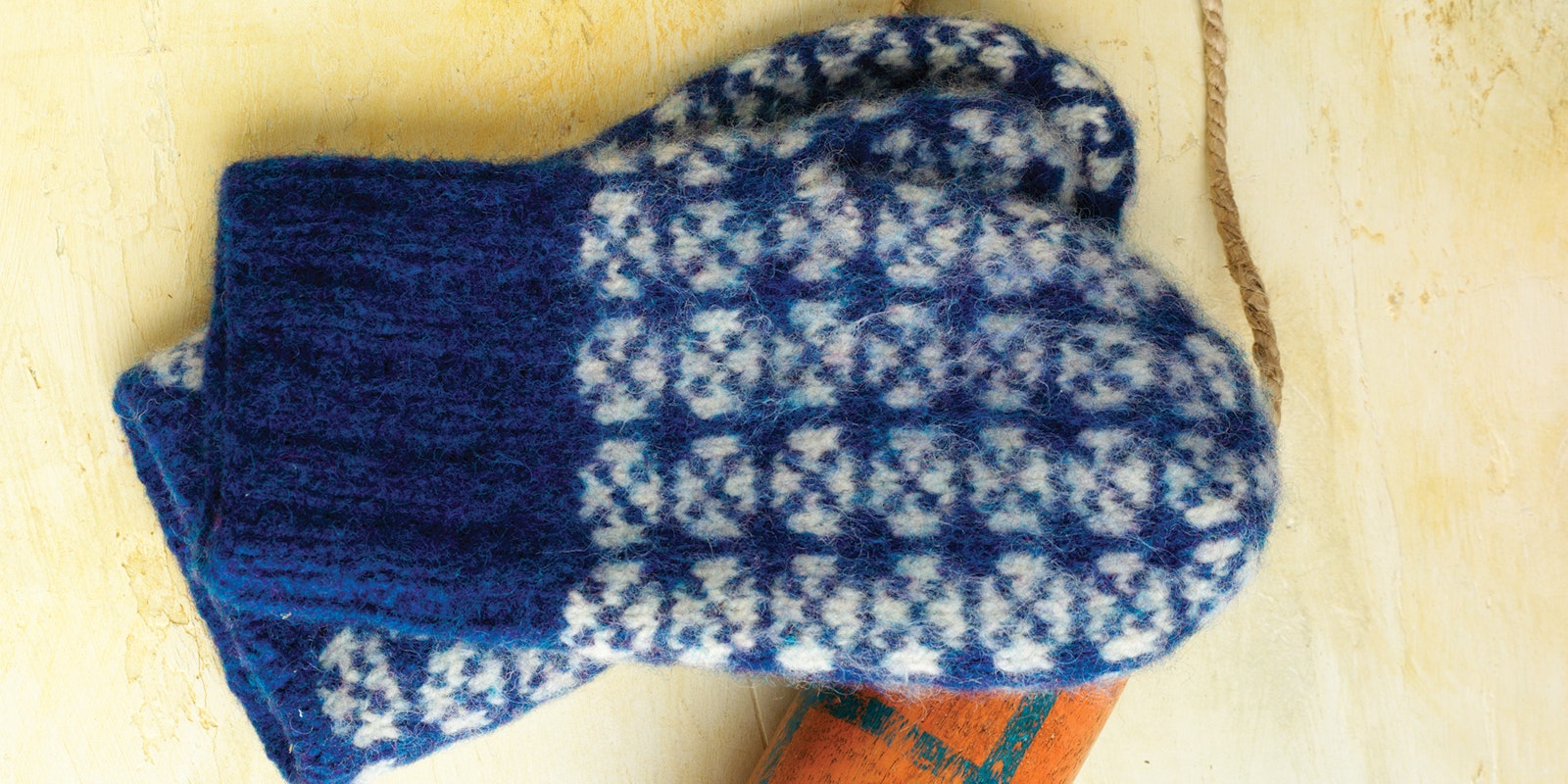In Maine and Nova Scotia, there really is a tradition of knitting shrinking Fishermen’s mittens and Compass mittens such as Josy’s (read about eleven-year-old stern man Josy Eldredge in “Ice Harbor Compass,” PieceWork January/February 2010), but they aren’t always called “Compass” mittens.
People in some villages call them “Fox and Geese” and remember games played in the snow with a circle crossed by lines. Some call them “Naughts and Crosses” and think of Tic-Tac-Toe. Others call them “Fox and Geese and Fences,” and knit them in three colors to strengthen a perception of foxes peering through a fence and geese running in flocks behind the fence.
In coastal communities where the design is called “Compass,” knitters and villagers are adamant: “I like them because the lines point north and south and east and west,” they say. Is there a reason for this? Is there magic in the mittens? Since Josy, Ice Harbor, and Aunt Agnes are fictitious, we will never know.
 Robin Hansen’s Compass mittens
Robin Hansen’s Compass mittens
There is other magic in these mittens that real people who wear them will tell you about: When it’s time to increase at the thumb, all six stitches of a pattern element are put on at once. In one round, there is one element; in the next, there are two. Look for this at the base of the thumb. And when it’s time to narrow down at the end of the fingers, pattern elements disappear in a single round. Like magic. How can that be? Knit them and find out!
They are knitted big—a man’s mitten may be 12 inches (30.5 cm) long—but by the time they’ve been in use for a day or two, they are fulled and shrunk and “molded to your hands.” Maine fishermen shrink their mittens on board their boats, wetting them in the engine’s cooling water, walking on them on the fishy deck as they work, and heating them on the engine manifold—turning them to keep them from scorching. Lacking a family fisherman, a lobster boat engine, and bay water, you can shrink wool mittens at home.
Three factors cause (untreated) wool to shrink: the shock of abrupt temperature changes (cold to hot, hot to cold), oil (fish slime or soap), and agitation, whether on a washboard or in a washing machine. Simply boiling mittens in a pot of water probably won’t shrink them.
Fulling by hand may take up to 45 minutes of hard work but will probably take less. You can start with the washer, preferably with a full load of clothes, and brush the mittens afterward; it will be easier, but you may end up with a less nappy, less luscious mitten. There are many such tradeoffs in life.
Compass mittens made in North America are traditionally black or navy and white. If you knit them in colors other than plain sheep’s black and white, I guarantee that they will not begin to glow and point north in a fog.
Looking to find more historical knitting patterns? This one and others can be found in the January/February 2010 issue of PieceWork.
Also, remember that if you are an active subscriber to PieceWork magazine, you have unlimited access to previous issues, including January/Febrary 2010. See our help center for the step-by-step process on how to access them.
Robin Hansen of West Bath, Maine, is the author of several books on traditional knitting.

